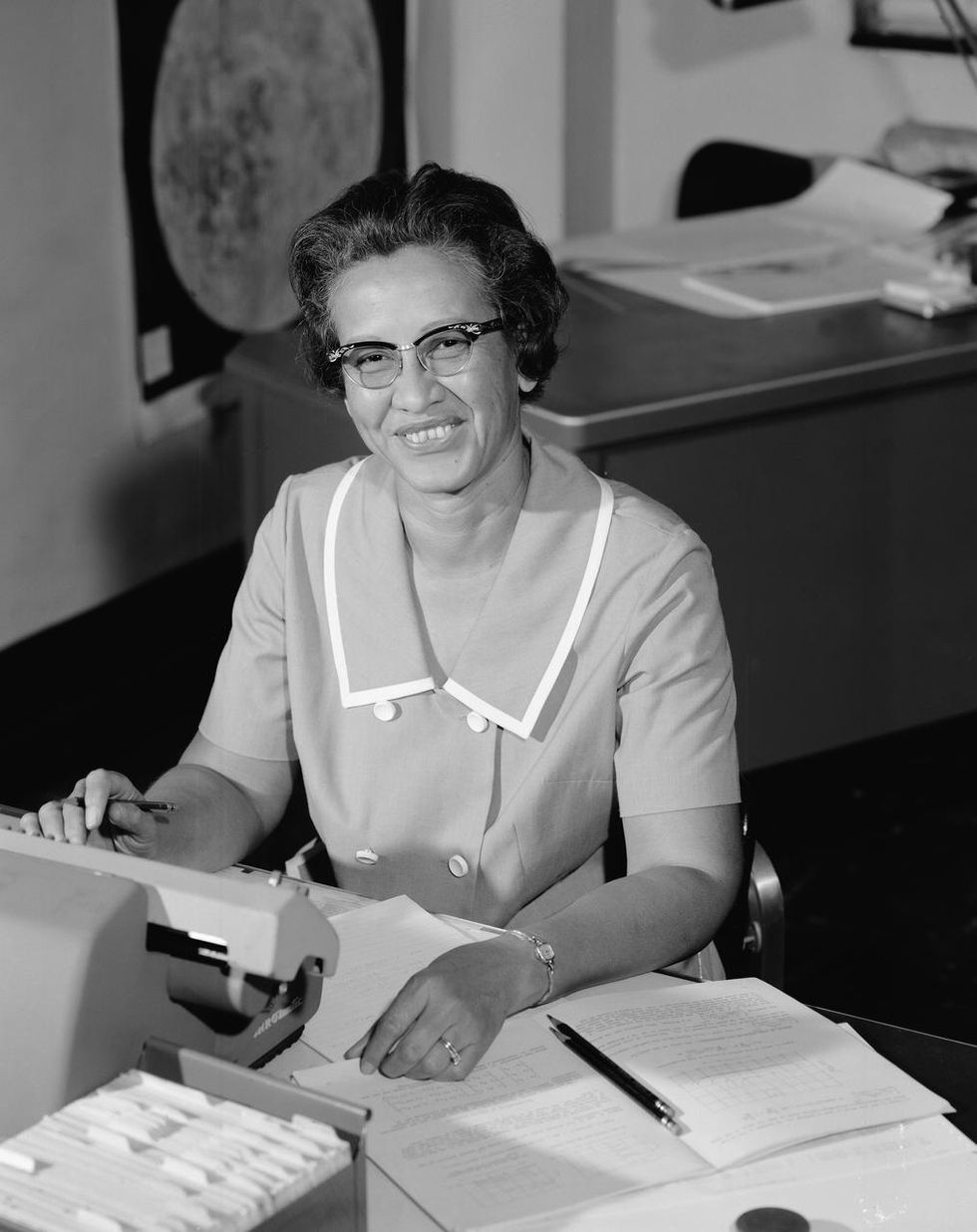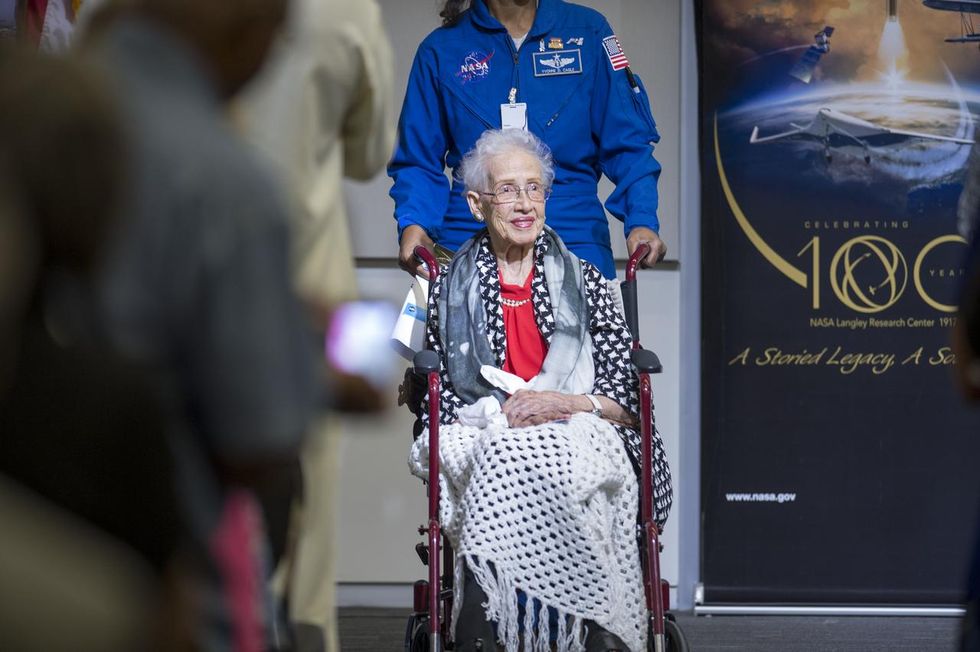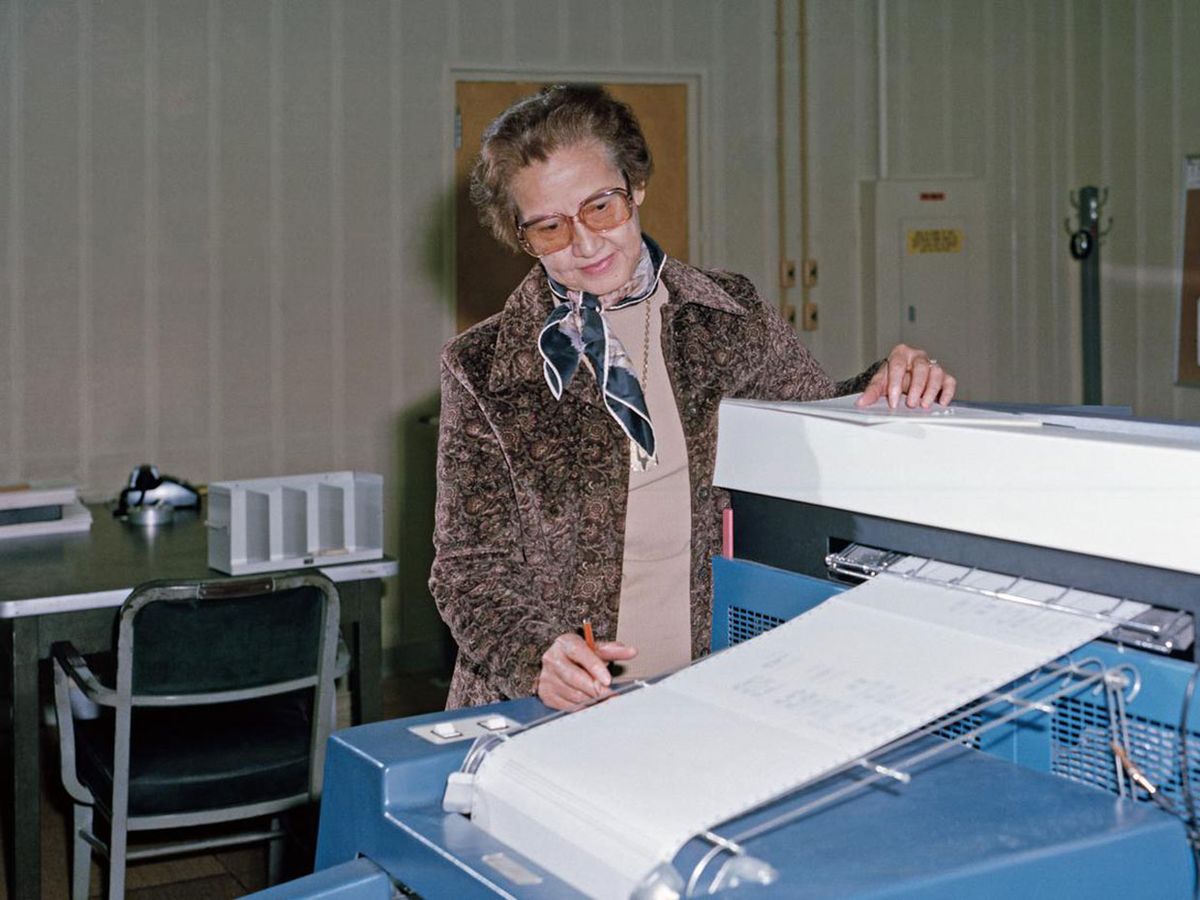Katherine G. Johnson’s mathematical calculations of orbital mechanics at NASA were critical to the success of Friendship 7 and several other U.S. human spaceflights. She was one of the women featured in the 2016 Oscar-nominated film Hidden Figures.
IEEE last month recognized her work with its President’s Award, “for fundamental computational contributions to the success of American’s first and subsequent manned spaceflights, including Apollo 11.” Johnson, who turned 100 in August, was unable to travel to the ceremony. Her daughters, Katherine Goble Moore and Joylette Goble Hylick, accepted the award on her behalf at the IEEE Honors Ceremony, held on 17 May in San Diego. Johnson “has a real passion for learning, and always aspired to teach others everything she knew,” Hylick said. You can watch the presentation on IEEE.tv.
As IEEE marks the 50th anniversary of the moon landing and spaceflight through the Footsteps: IEEE’s Commemoration of Human Space Travel effort, The Institute is highlighting IEEE members and other pioneers, like Johnson, and the technologies that helped propel the program forward.
THE VALUE OF EDUCATION
In a 2017 interview with The Washington Post, Johnson said she always wanted to be a mathematician. She attended high school when she was 10 years old, but due to segregation at the time, she wasn’t allowed to attend her county’s high school in Greenbrier, W.Va. Her family moved to Institute, W.Va., and she attended West Virginia State College, now West Virginia State University, which offered high school courses to black students.
She finished high school at age 14 at West Virginia State, then continued taking college courses there. She graduated in 1939 summa cum laude with a bachelor’s degree in mathematics and French. She planned on continuing her education and was selected as the first black woman in the state to attend the graduate school program at West Virginia University, in Morgantown. She withdrew from the program after one semester, however, to start a family with her husband, James Goble. Johnson worked as a math teacher at a black public school in Marion, Va.

According to her biography on the NASA website, Johnson always knew she would eventually leave teaching to become a research mathematician. In 1953 she joined NASA’s predecessor, the National Advisory Committee for Aeronautics, at its Langley laboratory, in Hampton, Va., as a pool mathematician. Those mathematicians, called computers, analyzed data collected from flight tests and airplane black boxes.
Thanks to her understanding of analytical geometry, just two weeks after she joined NACA, she was assigned to the maneuver-loads branch of the Flight Research Division. She spent the next four years analyzing data from flight tests and plane crashes.
MAKING SPACE FLIGHT POSSIBLE
When the Russian satellite Sputnik was launched in 1957, the United States was already working on sending satellites into space, but Sputnik’s debut led to the formation of NASA. Due to Johnson’s work at NACA, she was among the first employees hired by NASA in 1958.
Working as a technologist for the spacecraft controls branch, she calculated the path for astronaut Alan Shepard’s Freedom 7 mission in 1961, America’s first human spaceflight.
In 1960 she became the first woman to receive credit as an author of a research report, “Determination of Azimuth Angle at Burnout for Placing a Satellite Over a Selected Earth Position.” In it, Johnson and her coauthor, engineer Ted H. Skopinski, explained the equations describing an orbital spaceflight in which the craft’s landing position is specified.
Her life changed in 1962, when astronaut John Glenn asked for Johnson to double-check the trajectory calculations for Friendship 7. Because of the mission’s complexity, the space agency collaborated with IBM in the construction of a worldwide communications network. They built and linked tracking stations to IBM computers in Bermuda, Cape Canaveral, and Washington, D.C., so engineers could follow the flight live. The computers had been programmed with orbital equations that would control the trajectory of the Friendship capsule from blastoff to landing. Glenn, however, was nervous about putting his life in the hands of machines, which he believed to be prone to mistakes, according to NASA.

According to the NASA biography on Johnson, Glenn asked engineers to “get the girl”—meaning Johnson—during the preflight check, because of her experience with trajectory analysis. He wanted her to run the same numbers that had been programmed into the computer, but by hand, on her desktop calculator. In an interview with CNN, Johnson recalls Glenn saying while she was working, “If she says they’re good, then I’m ready to go.”
For her work on Friendship 7, in 2015 she was awarded the U.S. Presidential Medal of Freedom, the nation’s highest civilian honor. At the White House ceremony, President Barack Obama said, “No one knows that John Glenn wouldn’t fly unless Katherine Johnson checked the math.”
In 2017 NASA unveiled the Katherine G. Johnson Computational Research Facility at the Langley Research Center, in Hampton, Va., the same location where she started her career at NACA. Earlier this year, the agency renamed a facility in Fairmont, W. Va., that housed a program that monitors the software used to track NASA’s high-profile missions. It’s now called the Katherine Johnson Independent Verification and Validation Facility.
This article appears in the March 2019 print issue as “How Katherine Johnson Plotted NASA’s Course.”
